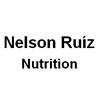Poultry Health: Bacterial Enteritis
Published: February 11, 2020
Related topics:
Mentioned in this news release:

Recommend
Comment
Share
Toyoor Barekat co
4 de marzo de 2020
Thanks to Mr. Nelson, in other side over heated soybean has biogenic amins that is not usable to chicken or hen and will be used by other bacteria like gram negative and induces dysbacteriosis followed by dark and black extera and wet litter.
Recommend
Reply

19 de febrero de 2020
Dr. De Gussem is quite right in referring in his interview to the fact of the large feed intake that occurs with modern broilers and the implications it may have in reference to dysbacteriosis or what he also called bacterial enteritis. A review of the definition and description of dysbacteriosis by Teirlynch et al. (2011. Morphometric evaluation of "dysbacteriosis" in broilers. Avian Pathology 40:2, 139-144) is basically what we call in the U.S. rapid feed passage ("transito rapido" in Spanish and also in Portuguese) and that we reported in 2005 is correlated to the trypsin inhibitors (TI) content of soybean meal [Ruiz & Belalcazar. Field observation: Trypsin inhibitors in soybean meal are correlated with outbreaks of feed passage in broilers. Poultry Science 84(Suppl. 1): 70]. Further reports (Ruiz. 2012 Arkansas Nutrition Conference) have indicated that levels as low as 0.60 mg of TI/g of feed (~ 1.20 TIU/mg) are associated with the syndrome. This value is not very different than 0.50 mg of TI/g of feed that Huisman suggested as the maximum tolerance level in diets for broilers in 1991(8th European Symposium on Poultry Nutrition, Venezia-Mestre, p. 47). Therefore, if we take into consideration the issue of feed intake, the fact that soybean meal is currently the number one supplier of digestible amino acids for poultry worldwide (and also for swine), and consequently, the high levels of inclusion of soybean meal in broiler diets, it should not be unreasonable to think that the NET INTAKE of trypsin inhibitors, a toxicant, deserves to be carefully reviewed. However, some researchers have developed dietary models based on rye to study dysbacteriosis and other intestinal integrity issues as if rye were an important ingredient worldwide! Let's just take a historical look of the feed intake of broilers in 1957 (Havenstein et al. 2003. Growth, livability, and feed conversion of 1957 versus 2001 broilers when fed representative 1957 and 2001 broiler diets. Poult. Sci. 82: 1500-1508) assuming a soybean meal with 2 mg of TI/g (3.0-4.0 TIU/mg), and at 23.8% inclusion of soybean meal, those birds would have had a cumulative intake of about 600 mg per bird at 42 days. Well, at exactly the same inclusion level of soybean meal but with boilers of 2001 those birds would have had a cumulative net intake of trypsin inhibitors of about 2007 mg per bird also at 42 days! Today in the United States because of the veggie diets that some broiler companies are feeding their birds the inclusion levels of soybean meal are even higher, and given the fact that broilers grown for further processing go to 56-58 days of age, can you imagine what is their NET INTAKE OF TRYPSIN INHIBITORS? Was Paracelsus (1493-1541) wrong when he said that "the dosage makes the poison"? No surprise that "wet litter" is being reported in houses where birds are fed veggie diets even with the best soybean meal quality in the market. In my assessment, it is likely that such "wet litter" is the result of dysbacteriosis caused by excess intake of trypsin inhibitors. Finally, in the more than 20 years observing and studying rapid feed passage in the field not a single event has been documented with mycotoxins as the cause even though we analyze for over 15 of them. However, rancid fats and oils may create a similar picture as dysbacteriosis, although not exactly the same. I really hope that professors like Dr. Richard Ducatelle et al. at Ghent University take the lead one day to investigate dysbacteriosis with real world ingredients. Nelson Ruiz Nutrition, LLC, Suwanee, GA USA
Recommend
Reply


Bacillus amyloliquefaciens CECT 5940 (Ecobiol®) alone or in combination with antibiotic growth promoters improve performance in broilers under enteric pathogen challenge
Suggested link
12 de febrero de 2020
When controlling bacterial enteritis #one is dry barn conditions, zeolite, garlic, butyrate and 100 ppm peroxide in water.
Recommend
Reply

Would you like to discuss another topic? Create a new post to engage with experts in the community.
















.jpg&w=3840&q=75)

